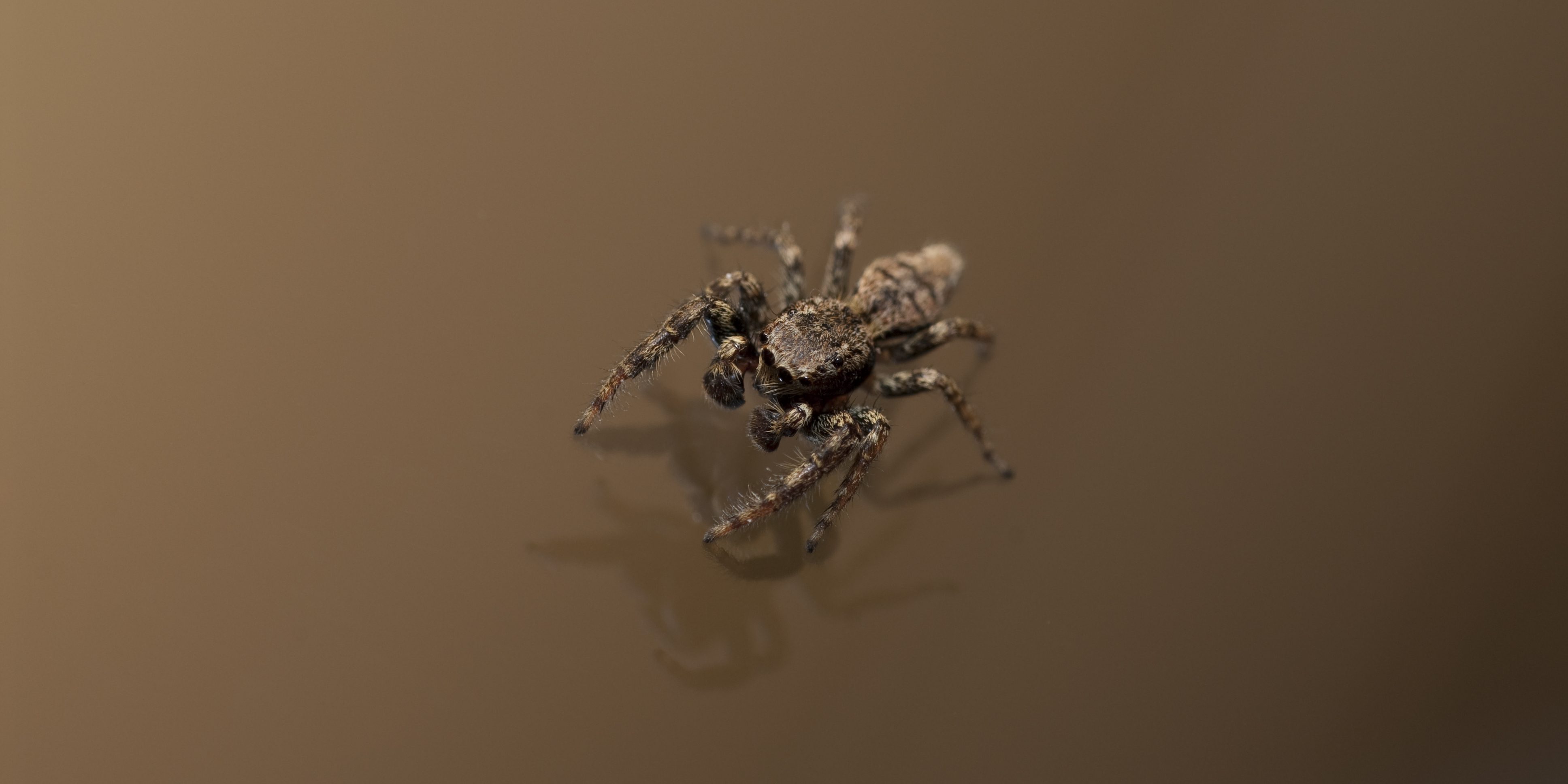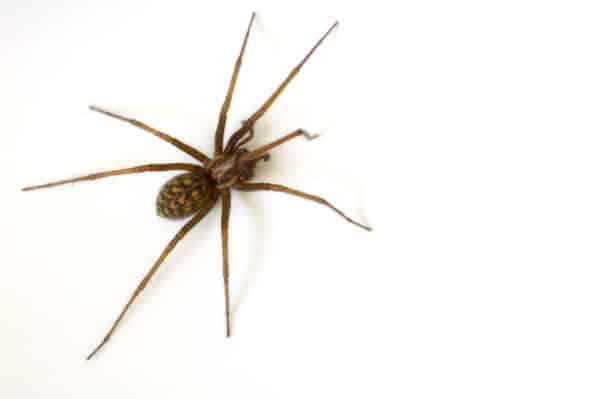Table Of Content

I can admire those individuals who have no fear of arachnids, but I cannot tell you how many times one has fallen on me while sleeping, reading, walking into my garage, etc. Web-building spiders are the types you’re likely to find in your home. Also called the zig-zag spider, the spider spins a classic spiral wheel-shaped orb web between plant branches in gardens. Therefore, you should take care in Arizona working in the yard or cleaning under furniture to avoid getting a nasty bite from the venomous critters.
Common Types of Spiders With Venomous Bites

They are also covered in dense hairs and have thick, short legs, giving them a scary appearance. Another feature is their eight eyes in three rows, with two prominent eyes in the center. Brown widow spiders are also found in yards under rock piles, wood piles, and other sheltered areas. These brown spiders are common in Arizona, Florida, California, and other southern states.
Daddy Longlegs Habitats and Habits
While they are not likely to bite humans, the bite can be painful. Other than this, their bite is harmless, and these spiders pose no threat to people. The common house spider gets its name because of how common they are across the United States. Nearly everyone has come across one of these insects at some point in time, most likely in their home or apartment.
Pest Library
Like all widow spiders, the brown widow has long, extended legs that are tan with dark brown bands. The brown widow spider is a venomous spider with a bulbous light brown to dark brown body and distinctive hourglass marking on the side of its abdomen. The brown widow’s markings can be orange or dull yellow, and it also has colorful markings on its back. The black widow spider is easily recognized by its shiny black body with a red hourglass marking. Black widows with red markings have a bulbous abdomen, long glossy black legs, and a small head.
How dangerous are common house spiders?
It builds funnel-shaped webs, and is known to prey on pest insects inside homes. Despite this fact, most people cringe at the sight of a common house spider. Seeing a black or brown arachnid scampering across the floor or lurking in a dark corner can send you into a panic. There is also the fear that the house spider is dangerous and could inflict a nasty bite. The western black widow spider is native to Arizona and is one of the most venomous black spiders in the state. You can identify the shiny black spider by the red hourglass-shaped mark on its bulbous abdomen.

Common House Spiders and How to Identify Them, According to Entomologists
Steatoda grossa, aka cupboard spider, has similarly expanded far beyond its native Europe, including North America and Australasia. Varying in length from 4 to 11 millimeters, this spider is known for messy webs that contribute to indoor cobweb buildup. It's also one of several Steatoda species known as a "false black widow" because people commonly confuse it with that highly venomous spider. Not only does it lack the black widow's red hourglass, however, but its bite is more like a bee sting. Many of the common house spiders found in the United States pose little threat to people, but this doesn’t mean it is fun to run into them. However, being aware of how harmless these insects are can lead to a better understanding of them.
Types of Arizona Spiders (With Pictures) – Identification Guide
Spiders aren’t blood suckers, thus they have no real reason to bite humans. Ed has been working in the pest control industry for years helping 1,000's of homeowners navigate the world of insect and rodent management. The western parson spider is commonly found in the western United States, particularly in grasslands and wooded areas.
These insects look vastly different from many other common types of spiders. Even though Harvestmen are nocturnal spiders, they can also be found frequently throughout the day. They’re a pale beige to yellow color which can even present a hint of green, while the tips of their legs are dark brown. Hobo spiders weave funnel shaped webs in which to catch their prey. Since Harvestmen have no silk glands, they don’t build webs, but tend to also like the same sorts of dark and damp areas. They both eat small insects like mosquitoes and flies, and can therefore be quite effective at pest control.
It's spider mating season: Why you're seeing spiders in your home now - USA TODAY
It's spider mating season: Why you're seeing spiders in your home now.
Posted: Wed, 06 Sep 2023 07:00:00 GMT [source]
Brown Spiders
Everything you think you know about spiders is wrong - National Geographic
Everything you think you know about spiders is wrong.
Posted: Fri, 12 Jan 2024 08:00:00 GMT [source]
However, you will notice them due to the large, sheet-like spoked webs they spin. In the house, the yellow sac spider typically lives in the corners of walls and ceilings, where it stays undisturbed. However, they are usually in gardens, hiding under foliage, boards, leaf litter, and stones. Therefore, it’s always best to use gloves when working in the garden. There are thousands of species of jumping spiders with common characteristics. The small, white-spotted spiders measure 0.04” to 1” (1 – 25 mm) long.
The cellar spider also goes by common names like vibrating spiders, carpenter spiders, and daddy long-legs spider. However, the name daddy long-legs is also given to other arthropods like harvestmen and crane flies. You’ll often find the black house spider lurking in wall crevices, crawl spaces, behind baseboards, and window frames. A black widow is most likely to bite after laying eggs and guarding their egg sacs, but only when disturbed. One myth worth debunking is that a Daddy Long Legs venom is strong enough to kill a human, but their fangs are too weak to penetrate your skin. When it comes to common household spiders however, there’s a couple key things to be aware of.
The cellar spider is easy to spot in homes because of its long spindly legs and tiny, egg-shaped, brown body. Although this small brown spider only measures 0.08” to 0.39” (2 – 10 mm), it has an enormous leg span of 2” (50 mm). In addition, the small spider has six eyes arranged in groups of three. Spider bites from one of these can cause blistering, fever, and muscle spasms for several days, but most likely won’t need professional treatment. They construct webs and depend mostly on vibrations due to lack of eyesight. The female reaches 6-10 mm in length, while the male gets 4-10mm in length and is thinner than its counterpart.
Additionally, many orb-weaver spiders construct eye-catching wheel-shaped webs. "Spiders feed on common indoor pests, such as roaches, earwigs, mosquitoes, flies and clothes moths," explains a fact sheet by Bayer CropScience. "You can't put something 'back' outside that was never outside in the first place," he writes. Not everyone who's afraid of spiders hates them, leading many people to try non-lethal eviction. Perhaps the most common strategy involves trapping a spider in a cup and releasing it outside, where it can presumably return to its natural lifestyle.
There are many different kinds of spiders found in homes throughout the world. In the United States, two out of three households have infestations. If bitten, the venom is usually not damaging enough to cause us permanent harm.
In extreme cases, the surrounding tissue can become gangrenous, leaving an open wound as large as a human hand, which can take eight weeks or longer to fully recover. The best way to avoid an infestation is by reducing clutter in unused areas of the home, in order to minimize possible hiding places. If spiderwebs are visible, use caution before approaching the area, and if you suspect Black Widow spiders, call a specialist immediately.


No comments:
Post a Comment